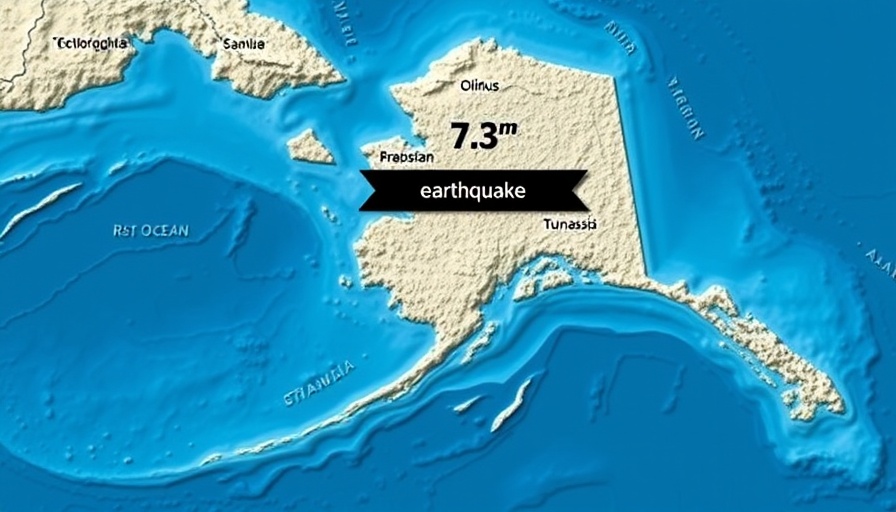
A Powerful Earthquake Strikes Alaska: A Closer Look
In the early hours of today, a staggering 7.3 magnitude earthquake shook an Alaskan island, sending shockwaves of concern across the Pacific region. Initial reports suggest that the quake occurred near the isolated Unalaska Island, a locality well-known as a fishing hub but sparsely populated. Emergency services swiftly activated tsunami warnings, advising residents and nearby communities to evacuate and move to higher ground as a precautionary measure.
This seismic event follows a trend of heightened seismic activity in Alaska, a state famous for its rugged terrain and geological volatility. With its position along the Pacific Ring of Fire, Alaska frequently experiences significant earthquakes, but events of this magnitude inevitably evoke fear and uncertainty amongst residents and officials alike.
The Tsunami Threat and Preparedness
As soon as the quake struck, experts scrambled to analyze its implications. The National Oceanic and Atmospheric Administration (NOAA) issued a tsunami warning for coastal areas within the vicinity of the quake, prompting rapid assessments of potential tidal waves. In previous cases, similar quakes led to devastating tsunamis, resulting in loss of life and widespread destruction. This precarious nature of coastal living underscores the importance of preparedness in seismically active regions.
The response from local authorities has been commendable, with community centers opening their doors for those displaced due to safety concerns. Local officials have urged residents to pay close attention to official announcements and stay on alert while updates are being communicated. The earthquake serves as a stark reminder of nature's unpredictability and the ongoing need for emergency preparedness in vulnerable communities.
Historical Context of Alaskan Earthquakes
Alaska is no stranger to seismic activity. The state recorded a notable earthquake in 1964, which registered 9.2 on the Richter scale and is famously documented as the largest earthquake in North American history. This event caused extensive damage and loss of life, initiating further studies into the preparedness of coastal communities. Each seismic occurrence raises awareness around infrastructure resilience and community readiness.
Insights from Experts: What Comes Next?
Geologists and seismic experts are now monitoring aftershocks, which are common following such sizeable seismic events. The United States Geological Survey (USGS) logged multiple minor aftershocks following today's quake, which serves to remind both residents and officials that the risk remains even after the immediate danger appears to have passed. Experts urge continuous vigilance as the geological landscape stabilizes.
Community Response and Emotional Impact
The emotional toll of an earthquake extends beyond physical safety, affecting community cohesion and individual mental health. Residents who experience such events often report anxiety and distress, especially those who witnessed prior seismic calamities. Community engagement becomes critical post-quake, fostering communication and emotional support among neighbors.
The Road Ahead: Building for Resilience
In the aftermath of major seismic events, it is essential for communities to reflect on their infrastructure and emergency response systems. Governments and local organizations are likely to reassess their preparedness strategies, moving towards more resilient urban planning and community education. Building resilience not only enhances safety but empowers citizens to take active roles in their own preparedness.
Today's earthquake in Alaska highlights the importance of up-to-date emergency plans enhanced by community awareness and collective action. Maintaining this vigilance is critical, especially in places where nature can strike unexpectedly.
 Add Element
Add Element  Add Row
Add Row 



Write A Comment